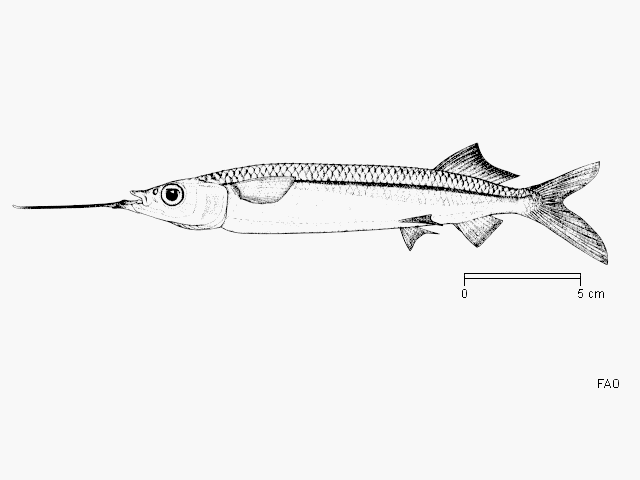| Hemiramphidae (Halfbeaks) |
| 34 cm TL (male/unsexed); max.weight: 176.0 g |
|
reef-associated; marine; depth range - 0 m |
| Indo-Pacific: west coast of India and Sri Lanka (Ref. 6041) and from the Gulf of Thailand, Philippines, and East Indies eastward to New Guinea and western Polynesia. |
|
Dorsal spines (total): 0-0; Dorsal soft rays (total): 12-15; Anal spines: 0-0; Anal soft rays: 10-13. Greatly prolonged, beak-like lower jaw; upper jaw short, triangular and without scales; preorbital ridge absent; total number of gill rakers on first gill arch 25-32; dorsal fin without well-developed anterior lobe; pectoral fins short, not reaching past nasal pit when folded forward; no vertical bars on sides (Ref. 9843).
Description: Characterized by dark blue color dorsally and silvery white ventrally with red-tipped darkish beak; upper caudal fin lobe, yellow; depth of body about 5.7 in SL; width of body contained 1.8-2.0 in its depth (Ref. 90102). |
| Inhabits the immediate vicinity of coasts, but juveniles may sometimes be found with floating plants carried out to sea. Taken with purse seines at Karwar on the west coast of India and with dol nets at Bombay. Marketed fresh and dried salted (Ref. 9843). |
|
Not Evaluated (N.E.) Ref. (130435)
|
| harmless |
Source and more info: www.fishbase.org. For personal, classroom, and other internal use only. Not for publication.
